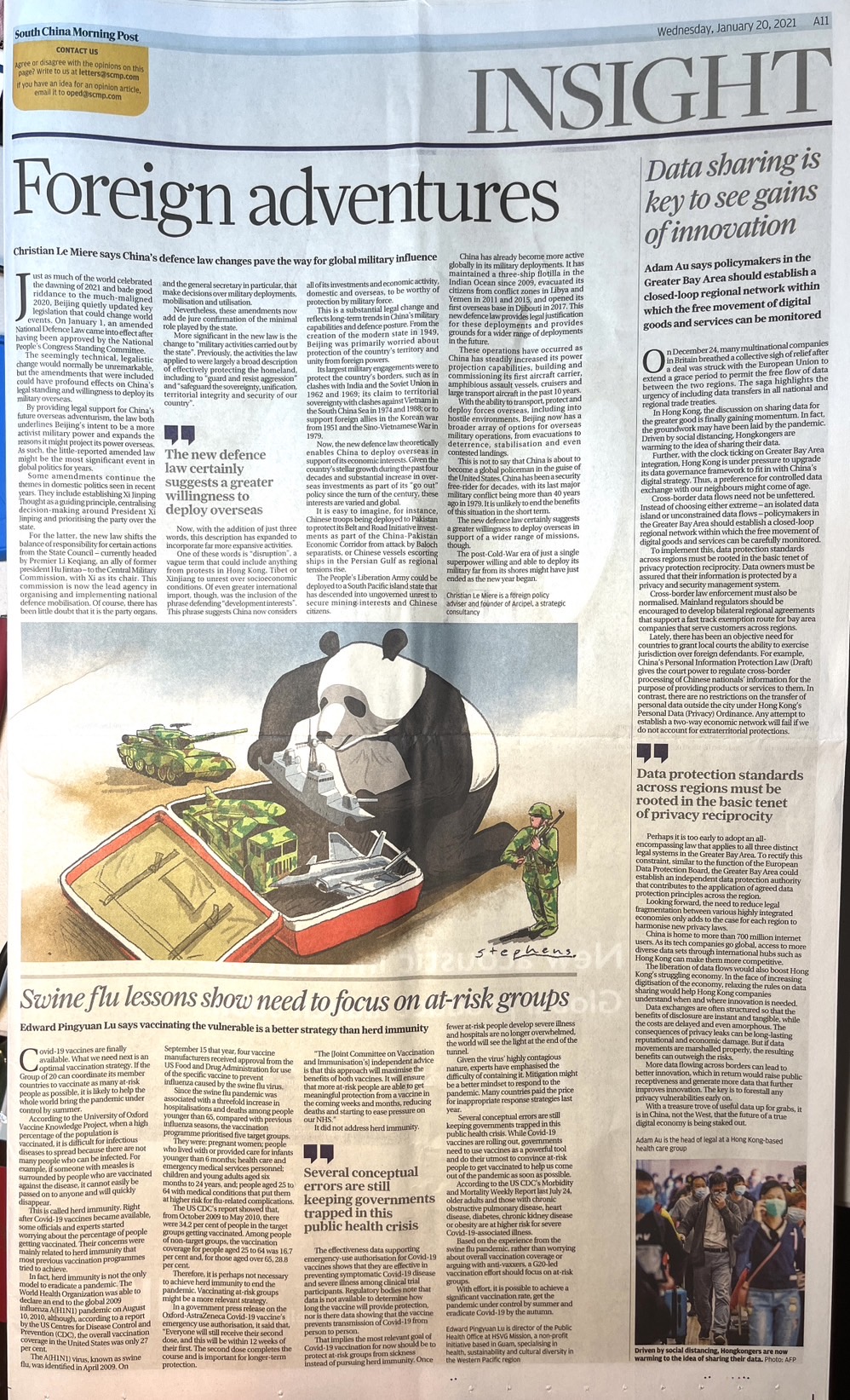Herd Immunity May Not the Goal COVID Vaccination Should Pursue
After COVID vaccines were finally available, some officials and experts started worrying about the percentage of people getting vaccinated. Their concerns are mainly related to herd immunity that most previous vaccination programs tried to achieve. However, COVID vaccination may need to pursue a different public health objective.
According to the University of Oxford Vaccine Knowledge Project, when a high percentage of the population is vaccinated, it is difficult for infectious diseases to spread, because there are not many people who can be infected. For example, if someone with measles is surrounded by people who are vaccinated against measles, the disease cannot easily be passed on to anyone, and it will quickly disappear. This is called herd immunity.
The governments that are distributing and administering COVID vaccines have to notice that herd immunity is not the only model to eradicate an pandemic. For example, the WHO (World Health Organization) was able to declare an end to the global 2009 influenza A (H1N1) pandemic on August 10, 2010, although, according to the report released by the US CDC (Center for Disease Control and Prevention), the overall vaccination coverage in the US was only 27%.
The novel influenza A (H1N1) virus was identified in April 2009. On September 15 that year, four vaccine manufacturers received approval from the US FDA (Food and Drug Administration) for use of the specific monovalent (H1N1) pdm09 vaccine in the prevention of influenza caused by the 2009 pandemic influenza A (H1N1) virus. Since the pandemic was associated with a threefold higher level of hospitalizations and deaths among people aged less than 65 compared with previous influenza seasons, the vaccination program prioritized five target groups – pregnant women, people who live with or provide care for infants younger than 6 months, health–care and emergency medical services personnel, children and young adults aged 6 months to 24 years, and people aged 25 to 64 years who have medical conditions that put them at higher risk for influenza–related complications.
The US CDC’s report showed that, from October 2009 through May 2010, there were 34.2% of people in the target groups getting vaccinated. Among people of non-target groups, the vaccination coverage for people aged 25 to 64 was 16.7% and for those aged over 65, 28.8%.
In fact, in the University of Oxford’s press release regarding its COVID vaccine’s emergency use authorization, they mentioned the Joint Committee on Vaccination and Immunisation (JCVI) will “publish its latest advice for the priority groups to receive this vaccine, with this announcement indicating that the JCVI has advised the priority should be to give as many people in at-risk groups their first dose, rather than providing the required two doses in as short a time as possible. The second dose completes the course and is important for longer term protection, and everyone will still receive their second dose within 12 weeks of their first, an approach the JCVI believes will maximise the benefits of this vaccine, ensuring at-risk people are able to get meaningful protection and ease the pressure on the UK National Health Service.” They did not address herd immunity.
Therefore, taking care of the at-risk people, once again, ought to be the main task after the COVID vaccines became available, instead of paying too much attention to the overall vaccination coverage rate and arguing with the anti-vaxxers. Once fewer at-risk people develop severe illness and hospitals are no longer overwhelmed, the whole world will see the light at the end of the tunnel.
The COVID vaccines’ effectiveness data supporting the emergency use authorization actually show that vaccines are significantly effective in preventing symptomatic COVID-19 disease and severe illness among the clinical trial participants. Every regulatory body also reminds that data are not available to make a determination about how long the vaccine will provide protection, nor is there evidence that the vaccine prevents transmission of the coronavirus from person to person. It implies the most relevant goal of COVID vaccination for now should be to protect at-risk groups from sickness, instead of pursuing herd immunity.
Since COVID’s highly contagious nature, it could be very difficult to achieve a containment goal and mitigation might be a better mindset to respond to the pandemic. Many countries had paid the price for inappropriate response strategies last year. Several conceptual errors are still keeping many governments trapped in this public health crisis. While COVID vaccines are finally available, governments of main countries really need to use vaccines as a powerful tool and do their best to convince and help at-risk people getting vaccination to bring the whole world to get through the pandemic as soon as possible.
(Published in the South China Morning Post on January 20, 2021)
